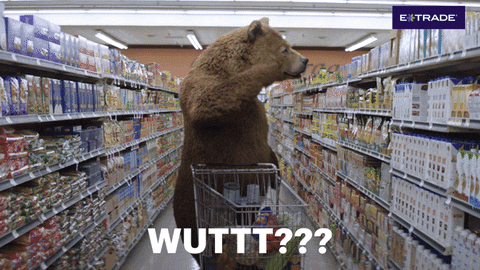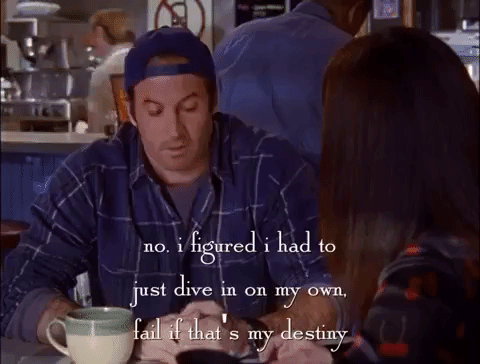Checking our Assumptions

What marketers take for granted about how people make decisions; why it took the pandemic for researchers to adopt remote methods; the value of the beginner's perspective
Only a day late this time (and we’ve switched to Substack, because, well, we want the option of alt-text on images, and not every newsletter platform even offers that feature, so). Here’s what we’re thinking about:

What even is a “high involvement” decision?
As we’re working on our big report on how people make decisions, one thing I keep coming back to is the time honored distinction between the “high involvement” purchase (e.g., cars, large appliances, expensive tech, an insurance policy, a mortgage, or a house) and the “low involvement” purchase (e.g., toothpaste, a pair of shoes, cosmetics). Most marketers assume that the hallmarks of a high involvement purchase start with the price - high involvement purchases cost a lot of money. And from there a set of assumptions attach:
- More than one decision-maker in a household is involved in making the decision.
- Many alternatives are considered and compared, but only one item will be purchased.
- There is a long lead-time between first considering making a purchase in the category and actually making a purchase.
- Timing matters - people are trying to time their purchase/commitment to exactly when they need the thing they’re purchasing.
- The price/value equation weights slightly more in favor of the sense of value as the ultimate purchase also entails a greater commitment - a longer period of ownership, or a long-term contract with a provider.
- Trust matters - people want to know that the thing they’re buying will perform well, and last for the term of the relationship (or the expected lifetime of the product).
Alternatively, low involvement purchases are comparatively cheap, and come with a generally opposite set of assumptions, contrasting with high involvement decisions:
- Anybody in the household with access to money can make the decision, and do it on their own.
- Impulse or habit guide the decisions.
- Few or no alternatives are considered or compared (“nobody reads the ingredients”).
- A purchase might happen before the item is needed, long after it’s needed, or just in time.
- Sometimes we buy in bulk.
- The price/value equation weights more in favor of price - a good offer might tilt someone towards a brand or “flavor” they didn’t purchase last time.
- Novelty matters - people are willing to try almost anything once when the stakes are low.
Our experience hasn’t always borne this out. Several years ago we worked with a dementia care company and discovered that the decision to place a loved one into assisted living is often made in a moment of acute crisis, quickly and under duress, with few options to compare, no or little involvement from other family, and with a lot of fear and distrust. On paper, it looks like a “high involvement” decision - life altering for everyone, expensive, a commitment of uncertain duration. But in practice, it looks a lot more like a “low involvement” decision, despite it being intensely, traumatically involved for the lone decision maker left to decide what to do with Mom or Dad.
As we talked to people about their approaches to making decisions, we broke them up into categories we called “big”, “small” and “long-term”. We offered our own frames for each of them - all three decisions would have a meaningful impact on people’s lives, but:
- Small decisions take relatively little time to make, may be incremental in some way, and may not cost a lot to implement.
- Big decisions fundamentally change something about the way you live your life, change the trajectory your life is on, they may take a long time to make or cost a lot of money - but they don’t have to.
- Long-term decisions are typically more about working towards a desired future state, and may contain a lot of small decisions - they typically take a longer time to make, and may or may not involve a significant investment.
Small decisions were often lifestyle changes - getting more exercise, going on a diet, quitting smoking, cutting expenses. But for the most part we noticed that small decisions were actually part of a bigger set of decisions that had life-altering implications. These small decisions represented commitments they were making to their future selves, or to their loved-ones - they were the first few steps on the journey of a thousand miles.
Big decisions and long-term decisions were often about purchasing a house or a car, moving or changing careers, starting a business, going back to school, getting married, having children, investing, or planning for retirement. These “big” decisions contain lots of little decisions, and try though people might, they can’t always control the order in which those smaller decisions have to be made. Some small decisions get skipped altogether. Sometimes a crisis occurs or an opportunity arises and the big decision gets made faster than they anticipated; sometimes circumstances change and their hand is forced.
So what does all this mean for marketers? To begin with, you can’t rely on the cost of a thing as a proxy for how much information a person needs, how much time they need, or how high- or low-touch the customer experience should be.
Sometimes people need to find a place to live today, or buy a car today, or set up a new payroll and benefits system today, and when they got up this morning, they didn’t know they were going to spend the day doing that.
Sometimes people are beginning a process of transformation, and even small purchases need to be reappraised in light of their goals - more options compared, more alternatives investigated. They want to get it right but they don’t need to get it today.
A lot of times, people start out thinking they have all the time in the world, all the resources they need to make an informed decision or even to simply do what they usually do - and yet life and circumstances intervene. Public health crises, inflation, supply chain problems; a missed deadline, a lost piece of mail, a nail in a tire. The circumstances in which people are making decisions matters at least as much as the value of the purchase and the length of the commitment.
There are no tidy purchase funnels because that’s just not how we live.

A note from Ashley about remote research
We previously mentioned that we're investigating the current state of the market research industry, to understand the trends both on the business side and the methodology side, and see trends that might be relevant to your own industry. We’ve been reading through some reports [1] that were published in the early start of the pandemic as well as a few published at the end of 2020 [2]. Of course the pandemic has shifted the way market research is done, so it was no surprise that the reports alluded to an increase in remote research / ethnography. We’ve been conducting predominantly remote research for several years, so the surprise for us was how much of a shift it’s really been for the industry at large.
As outlined in the reports, most teams outside of North America rely heavily on in-person research so the shift to remote work was and still is, for many, a challenge. The reports also suggest that clients are looking more and more for teams who adapt and stay up to date on the latest technology.
At The Difference Engine, we’re constantly adapting to new technologies that help us research in the best ways possible. In fact, we find remote research can often be easier and even give you access to an audience you might not be able to interact with otherwise. For instance, someone who experiences social anxiety and doesn’t do well in groups or someone who lives in a rural part of town and does not have access to transportation but has access to a computer can participate in research remotely even when they can’t come to a focus group facility.
While the reports share that the need for research has not necessarily dropped, the type of research and needed answers have shifted. In thinking on the projects we’ve worked on this year, we certainly can attest to the shift in how research is done and what clients are looking for.
But as I continue to read through the reports and their suggestions, I find myself saying, “well, yes, we already do that,” or “we’ve already adapted for that”. So I can’t help but wonder: what’s going on in the industry that has prevented our colleagues from using all the tools at their disposal - and for this long?

Reflections from Nic on learning to do research
I’ve known Farrah since 2007. She bought me Portal 2, understood every single silly joke and meme I’ve ever told her about, and been a general fount of mentorship ever since. However, it was not until 2021 that I had a figment of an understanding of how she makes a living.
When I was in middle and high school, people’s careers weren’t as interesting to me as they are now. Whenever Farrah’s career would come up during family dinner conversations, she’d concisely describe her daily activity as “I interview people for a living.” I was always intrigued - how many different ways can people be interviewed? The extent to which I knew of “interviews” as being useful basically included local news interviews. There had to be more to what she did!
Fast forward a decade and some change, I now find myself smack in the field of market research. Acclimation to the field has been a fast paced, though gentle, crash course. Though there are many methods (within each exist even deeper dives), all of the bells and whistles of market research boil down to a pretty simple core tenet: listen to human beings about their human experiences.
I can do that. People have lots to say, usually even more if they feel listened to.
The tricky bit comes after the interview. Evaluating sub-text takes a lot of discriminating deduction. We transition from a pleasant conversation to a brutal interrogation of our transcripts. This step is crucial towards understanding our results because people don’t usually describe - or even fully know! - their reasoning for what they say in normal conversations. And so, it’s up to us to analyze the content of our conversations through a variety of lenses.
This is difficult! Our understanding of our interviewee’s (people who are considered “strangers” in just about any sense of the word) experiences are developed outside the contexts in which those experiences emerged. The only insight into their life is what they tell us - we must trust that they are attempting to provide an answer that feels true to them. Examining the meaning of another person’s responses becomes one of our tasks, as truthfulness is more akin to a spectrum than a binarism.
Now, when people ask me what I’m doing while working with The Difference Engine, I say, “It’s complicated” — because I haven’t interviewed anybody (yet).
Well, just you wait, Nic. Just you wait.
That’s it for us this week. We’ll have something pretty cool to announce in next month’s newsletter, so stick around (and share this if you liked it).
See you next time,
Farrah, Ashley & Nic
ENDNOTES
[1] https://www.researchworld.com/insights-in-times-of-covid-19-esomar-report-summary/

